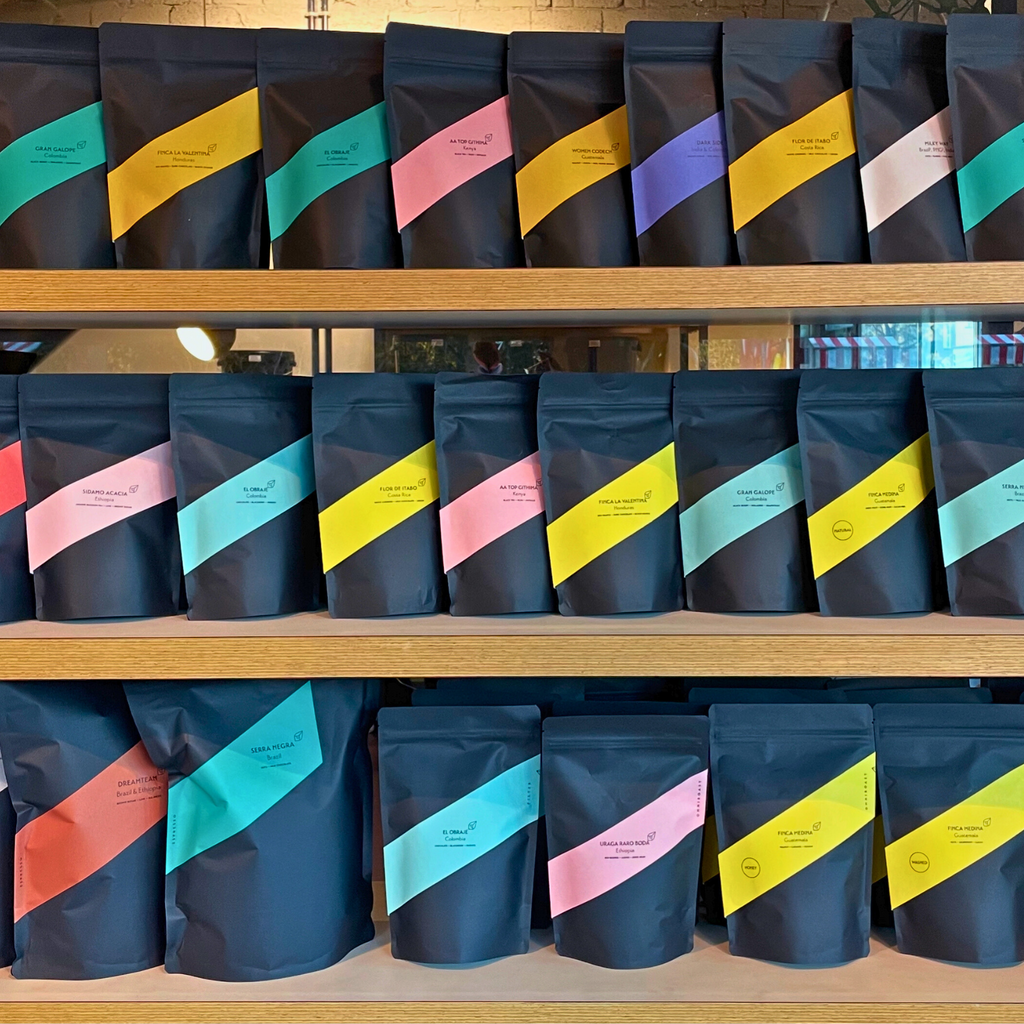Filter roast, espresso roast, or omni-roast? Which is right for you?

What is the difference anyway?
When you read terms like filter, espresso, or omniroast, it's not about the bean itself, but rather the roast profile —that is, how long and intensely the bean was roasted. This influences how the coffee tastes and what it's intended for.
And even though these terms often sound like rigid categories, the world of specialty coffee is more about light to medium roasts – not the classic "dark" roasts you might be familiar with from classic Italian espresso. Everything here remains finer, more nuanced, and more exciting.
Filter roast – clear, fruity, transparent
For whom?
Ideal for: Hand filter, V60, Chemex, Aeropress, French Press
What happens during roasting?
Filter roasts are usually light to medium-light. The roasting time is shorter, so more of the bean's original aroma is preserved. The goal is a clear, transparent cup in which subtle notes such as citrus, berries, flowers, or stone fruit can emerge.
This is what it tastes like:
- Bright, clean cup
- Fruity to floral aromas
- Lively, balanced acidity
- Little bitterness
What you should know:
While filter roasts are intended for brewed coffee, they can also be very exciting as espresso, especially if you appreciate fruitiness, lively acidity, and complex cups. With the right settings (grind size, temperature, ratio), they often produce surprisingly expressive shots – far removed from classic espresso.
Espresso roast – full-bodied, sweet, structured
For whom?
Ideal for: portafilter machines, Bialetti, fully automatic machines
What happens during roasting?
Espresso roasts are generally slightly darker. They are roasted longer than filter beans, reducing acids and accentuating sweetness, body, and roasted flavors—without becoming bitter or burnt.
This is what it tastes like:
- Full body, round impression
- Caramel, nut, chocolate
- Soft acidity, harmonious balance
- Strong but clean
What you should know:
Espresso roasts work best in short, intense preparations. In a filter pot, they often seem too heavy or one-dimensional—but of course, taste comes before label.
Omniroast – One profile for many paths
For whom?
Ideal for: People with multiple preparations or who like to experiment
What happens during roasting?
The so-called omniroast is an attempt to create a single roast profile that works well in both brewed coffee and espresso. The roast is usually between filter and espresso—medium-light—with balanced sweetness, well-integrated acidity, and enough body for both methods.
This is what it tastes like:
- Versatile and well-rounded
- Balanced sweetness
- Good balance of acidity and structure
- Works with hand filter and portafilter
What you should know:
An omniroast is not a lazy compromise, but a versatile approach – ideal for those who like to remain flexible or use multiple appliances at home.
And how do I find the right roast?
It's simple: Ask yourself how you prepare your coffee – and what flavor you're looking for.
| You prepare with... | Then you should try... |
| V60, Chemex, French Press | Filter roasting |
| portafilter, Bialetti | Espresso roasting |
| Both or open to everything? | Omniroast |
And if you feel like experimenting, why not try a light filter roast as an espresso – or brewing an espresso in a filter? Sure, why not?
Conclusion
The terms filter, espresso, and omniroast aren't rigid rules, but rather references to different roasting styles. The lighter the roast, the more freshness, acidity, and transparency; the longer the roast, the more sweetness, depth, and body. Ultimately, what you like is a matter of taste—and that's a good thing.
Trying is allowed. Being curious is allowed, too.
Questions about roasting or preparation?
Feel free to get in touch – we'll help you without jargon. Coffee should be fun – and taste good.
